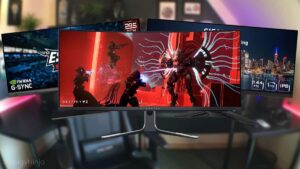A variety of stunning ultrawide computer monitors have been introduced in recent years. They’re made to provide a more wide, immersive perspective for selective office workers, content creators, and gamers, giving eye-popping visuals or just more workspace. Ultrawide, which are distinguished by their increased width in comparison to their height, are available in diagonal panel widths up to 49 inches. In the professional, gaming, and productivity realms, this extra horizontal screen area can be advantageous in a variety of ways.
Is an ultrawide monitor on your surface? Perhaps, but you’ll want to learn the ins and outs of these big, bold screens first, as they’re a bit of an investment in terms of both money and desk space. Here’s everything you need to know about it.
What you will see here:
The Aspect Ratio’s Importance
When comparing an ultrawide panel to one with more traditional proportions, it’s important to understand the aspect ratio. The relationship between horizontal and vertical pixels on a screen is represented by the aspect ratio. This is the ratio of display width to height.
21:9 and 32:9 are the most popular ultrawide aspect ratios. The latter is a more extreme example, with a width more than three times that of its height. “Superwide” or “super ultra-wide” refers to monitors with a 32:9 aspect ratio. However, we consider them to be a part of the ultrawide category, and we refer to both 32:9 and 21:9 panels as “ultrawide.”
Computer monitors have been steadily wider in comparison to their height throughout the decades. However, the present ultrawide wave is the most drastic expression. Many monitors had a boxier 4:3 aspect ratio around the start of the millennium, which originated with motion films. (It’s a 35mm film’s standard aspect ratio.) Monitors with a slightly wider 16:10 aspect ratio became popular around 2005, however, their popularity faded quickly. Within five years, widescreen monitors with a 16:9 ratio—the dimensions of high-definition television (HDTV) image—had entirely replaced them.
The 16:9 aspect ratio is still the most popular. 720p (1,280 by 720 pixels), 1080p (1,920 by 1,080 pixels), 1440p/QHD (2,560 by 1,440 pixels), and UHD/4K (3,840 by 2,160 pixels) all have a 16:9 aspect ratio. In 2012, the first 21:9 monitors were released, followed by 32:9 screens in 2017.
Ultrawide displays are, as the name implies, physically wide in addition to their distinctive aspect ratios. The majority feature 34, 43, or 49-inch measured-diagonal screens. The 49-inch models, with native resolutions of 5,120 by 1,440 pixels or 3,840 by 1,080 pixels at a 32:9 aspect ratio, tend to pack in the pixels.
Workplace Use of Ultrawide Monitors
Multitaskers will enjoy ultrawide business monitors. Why? For starters, they allow you to open many full-size windows side by side on the same screen. Several manufacturers, including Dell, include software that allows you to divide the large screen into nicely organized windows. That software can do more than the built-in tiling, auto-resize, and snapping functions in Windows 10.
Multi-monitor arrays can also be replaced with these panels. With the same vertical pixel count, a 32:9 monitor is twice the width of a 16:9 monitor. A 49-inch monitor with a 32:9 aspect ratio. For example, the same screen size as two 27-inch monitors placed side by side.
Ultrawide business monitors typically contain a multitude of ports including at least one HDMI and one DisplayPort input, as well as upstream and downstream USB ports and USB Type-C. The USB-C port on many late-model ultrawide business monitors can transfer data. As well as the real video signal (through the “DisplayPort over USB” protocol). This also powers or charges the laptop from which the image is being displayed (if applicable).
The USB-C port on a few monitors of this class can use as a virtual keyboard, video, and mouse switch. As long as one computer is connected via the USB-C connector. This capability would allow you to control two computers connected to the monitor with a single keyboard and mouse. This uncommon, space-saving function may appeal to users conducting render work or data processing on a second machine.
Curved screens are common on ultrawide business monitors. Albeit the degree of curvature is usually milder than on curved gaming displays.
Content Creators Require Ultrawide Monitors
Graphic artists and photographers in the professional content-creation field can profit from the extra screen width. They can simultaneously open and work with two or more photos (or several versions of the same photo or drawing). Ultrawide may also allow picture and video editors to view their source material in full quality while still leaving enough screen area for palettes, toolbars, and timelines to coexist without the need for resizing or shuffling.
Ultrawide Monitors for Gamer
There are also a lot of ultrawide gaming monitors on the market right now. Not every gamer or game will benefit from an ultrawide panel (more on that later), but they are especially well-suited for racing games, flight simulators, and other genres that reward players for being able to see locations outside of their peripheral vision.
A highly curved screen is used in several gaming-focused devices to create a more immersive experience. The curvature rating for gaming monitors is usually about 1800R, which implies that if you put enough of them together to form a circle, the radius would be 1,800mm, or 1.8 meters. The gentler and shallower the curve, the higher the curvature rating number.
Ultrawide gaming monitors, like other gaming monitors, have some traits in common. High refresh rates (up to 360Hz) and adaptive sync (AMD FreeSync or Nvidia’s G-Sync) are common in cutting-edge models. Ordinary productivity-oriented panels refresh at 60Hz, which is the standard for mainstream displays. When the associated PC and video card can push constant game frame rates over 60 frames per second, a higher refresh rate will allow twitch-minded players to see smoother, more reactive gaming (fps).
Ultrawide Monitors BenQ EX3501R
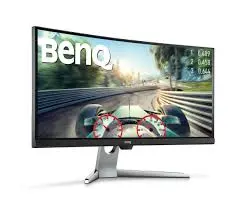
The BenQ EX3501R is an ultra-wide entertainment monitor with a stunning 35-inch curved screen. It brightly displays HDR content, performed admirably for color and grayscale accuracy, and also cleaned up beautifully in-game testing. Although it lacks the features and performance of the Editors’ Choice Dell UltraSharp 34 Curved Monitor U3417W, the EX3501R is a good general-purpose multimedia monitor.
The EX3501R’s panel contains a gray-black cabinet with a matte finish, and the screen is practically rimless. The bottom bezel is an inch wide, while the top and sides bezels are so tiny that they are scarcely visible. It comes with a stand that adjusts for tilt and height but not for swivel, unlike the Dell UltraSharp 34 U3417W, which has a full 60 degrees of swivel. The EX3501R weighs 22.9 pounds and measures 17.5 by 32.8 by 8.8 inches (HWD) when mounted on its platform.
Philips Brilliance 499P9H 49
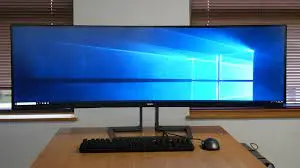
These days, 49 inches is the sweet spot for big, extra-wide monitors for the $1,299.99 price tag The Philips Brilliance 499P9H is the fourth of these massive displays. We’ve reviewed, and like the others, its designers put a lot of thought into its design. Multitaskers will appreciate the 499P9H’s big curved screen, high native resolution, and accurate color coverage. It also handles images and video nicely. It’s pricey, but it’s up there with the LG 49WL95C-W as our favorite ultra-wide large-screen business monitor.
The Brilliance 499P9H’s 49-inch vertical alignment (VA) panel has 5,120 by 1,440 pixels. This is the same as two 27-inch QHD (2,560-by-1,440-pixel) monitors set side by side for an extra-wide 32:9 aspect ratio. “Double quad HD” is a term used to describe this resolution (DQHD). The Dell UltraSharp 49 Curved Monitor (U4919DW) and the LG 49WL95C-W have the same resolution and aspect ratio as the 499P9H.
LG 49WL95C-W

Although 49-inch monitors aren’t exactly widespread. We’ve seen enough of them in the last year to know that they’re here to stay. The LG 49WL95C-W shares many of the same features as the Dell UltraSharp 49 Curved Monitor (U4919DW). Observe by recently, but it adds enough to make it our Editors’ Choice ultra-widescreen business monitor. Though you wish to boost your multitasking by keeping numerous windows open on its large screen at the same time, it’s a good (if pricy) choice.
The Dell UltraSharp 49 and the 49WL95C-W are both general-purpose business monitors. The 49WL95C-W, like the Dell 49, has a 49-inch (diagonal) IPS panel with a native resolution of 5,120 by 1,440 pixels and an ultrawide 32:9 aspect ratio, which is equal to two 27-inch QHD (2,560-by-1,440-pixel) displays set side by side.
LG UltraGear 38GN950
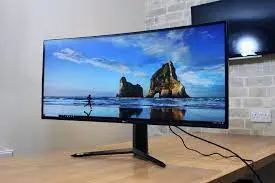
It is not difficult to impress from LG UltraGear 38GN950 with a 144Hz refresh rate that easily overclocks to 160Hz, 1ms reaction time, excellent image quality. More gaming features like G-Sync, an ultra-wide aspect ratio, and DisplayHDR 600, this is the monitor to beat if you’re searching for the ultimate gaming monitor. If you’re serious about gaming, this is the best ultra-wide display you can buy — assuming you can afford it.
Although an ultra-wide monitor with a large screen and a slew of gaming-specific functions may sound appealing, it comes at a cost. The UltraGear 38GN950 is an extremely costly monitor, costing £1,499 (about $2,000 / AU$2,700). With that kind of cash, you could make some significant improvements to your gaming PC.
Samsung Odyssey G9 Gaming Monitor
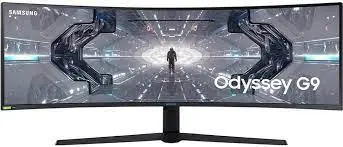
The Odyssey G9 from Samsung is the company’s top-of-the-line gaming display, and it’s a big one. With a brilliant, colorful picture that will please most gamers. This 49-inch 1440p curved screen can wrap around your sightlines and then some. It’s expensive at $1,429.99, but its size and gaming-specific performance help justify the cost for dedicated flight simulators and racing players who prefer one massive, engulfing widescreen panel to a bank of many with seams between them.
The Ultrawide Monitors back are white, which is an unusual design choice that we’ve also seen in Alienware’s gaming monitors. (One of Alienware’s white-toned, a.k.a. “Lunar Light,” desktops or laptops would look great with the panel.) It’s attached to a V-necked stand with a wide, V-shaped base that’s quite thin but strong. The stand allows for height adjustment, but no tilt is possible due to the monitor’s size.
Ultrawide Monitors MSI Prestige PS341WU
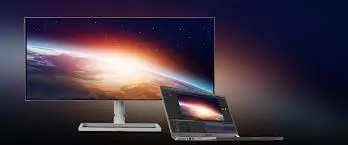
You’ve got the MSI Prestige PS341WU if you’re looking for a monitor that’s a cut above the 4K norm. It’s not easy to top a perfect 4K monitor, but this one does it with its massive 5K2K native resolution (and 21:9 ultrawide aspect ratio) of its lush 34-inch IPS screen. It isn’t inexpensive, but it comes with a lot of amazing features, like a Nano IPS panel with a DCI-P3 color gamut, HDR compatibility, and a lot of connectivity. All of this is wrapped up in a lovely white aesthetic, and you’ve got one of the greatest ultrawide displays of 2020.
The MSI Prestige PS341WU, on the other hand, isn’t simply about pixel counts. It has a Nano IPS panel from LG, the world’s leading LCD manufacturer. As a result, high-fidelity image quality is achieved. MSI claims 98 percent coverage of the difficult DCI-P3 color gamut, as well as 100 percent sRGB coverage. Both, as well as
Ultrawide Monitors AOC CU34G2X
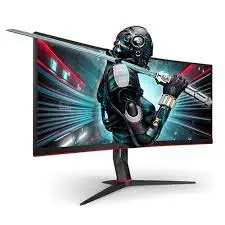
There’s no disputing this monitor’s outstanding performance. Rather than highlighting its gamer-centric characteristics with sharp angles and intense RGB lighting. This ‘frameless’ display works hard to deliver best-in-class performance. If you’re searching for gaming capabilities, it has a 144Hz refresh rate, 1ms response time, and 1440p resolution for immersive gameplay that also looks great. With a price tag of $450/£450, you’re certainly getting a lot of bang for your buck.
Thankfully, the AOC CU34G2X’s performance is far superior to what any of our previous criticisms would suggest. When leaning in close over your keyboard, the curve isn’t too overbearing, and it’s one of the most immersive experiences you can have when wearing a gaming headset.
ViewSonic VP3481
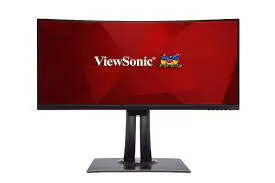
The ViewSonic VP3481 ($699.99) is a professional Ultrawide Monitors for photographers, video editors, and graphic designers that features a huge ultra-wide screen with excellent color accuracy and is pre-calibrated to multiple color schemes.
The VP3481 has a plain, uncomplicated design. The base has a 15.5-by-10.5-inch footprint, and a bifurcated shaft emerges from it, the cabinet fix. Although the base and shaft are primarily made of plastic, they appear to be quite stable. The display measures 24 by 31.9 by 11.8 inches with the stand fully extended (its height may be raised by up to 5.1 inches) (HWD). In addition to height, it allows for swivel and tilt adjustments. The top and side bezels are almost undetectable, maximizing screen space and making it ideal for multi-monitor setups.
Ultrawide Monitors BenQ Mobiuz EX3415R
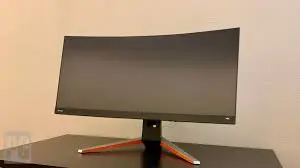
In the area of gaming monitors, you’ll nearly always have to make a compromise or two to get the best deal. Accept a lower high dynamic range (HDR) rating in exchange for a faster refresh rate, larger screen size in exchange for a heavier device, or anything in between. Ultrawide displays, such as the $2,499 Acer Predator X35, come on rare occasions and make nearly no compromises save for a premium price. Other times, we get monitors like the BenQ Mobiuz EX3415R ($999.99), which foregoes a greater HDR rating or more brilliant color to achieve record-breaking input-latency performances.
Unfortunately, rivals like the $649 MSI Optix MPG341CQR, which manages to equal the Mobiuz’s specs and performance numbers while looking better and costing a lot less, have broken those records. If you’re a BenQ fan, the EX3415R is the company’s best gaming ultrawide monitor. Otherwise, MSI already has you covered for a lot less money.
Conclusion
Ultrawide monitors aren’t for everyone, but if you do need a display with a large screen. Whether for gaming, advanced content creation, examining massive spreadsheets, or comparing many copies of a photo or illustration, there are plenty of options. We’ve put several panels through their paces, and we’ve got a list of our favorites for various scenarios.
BenQ’s EX3501R is a curved ultra-wide entertainment display with a 35-inch screen. It displays HDR content brilliantly, performed admirably in our color and grayscale accuracy tests, and cleans up beautifully in-game testing.
Many of the features of the LG 49WL95C-W are similar. To those of the Dell UltraSharp 49 Curved Monitor (U4919DW), we recently reviewed. It adds enough to earn it our Editors’ Choice ultra-widescreen business monitor.



